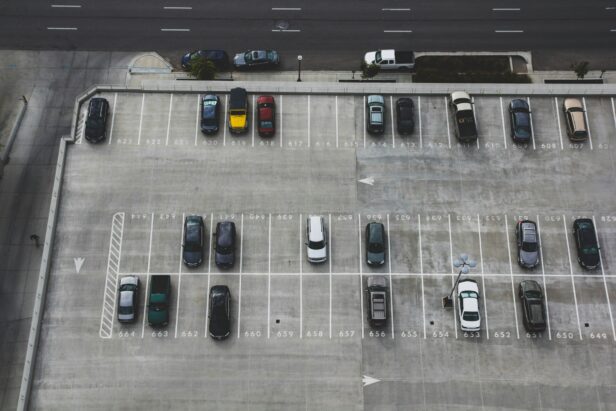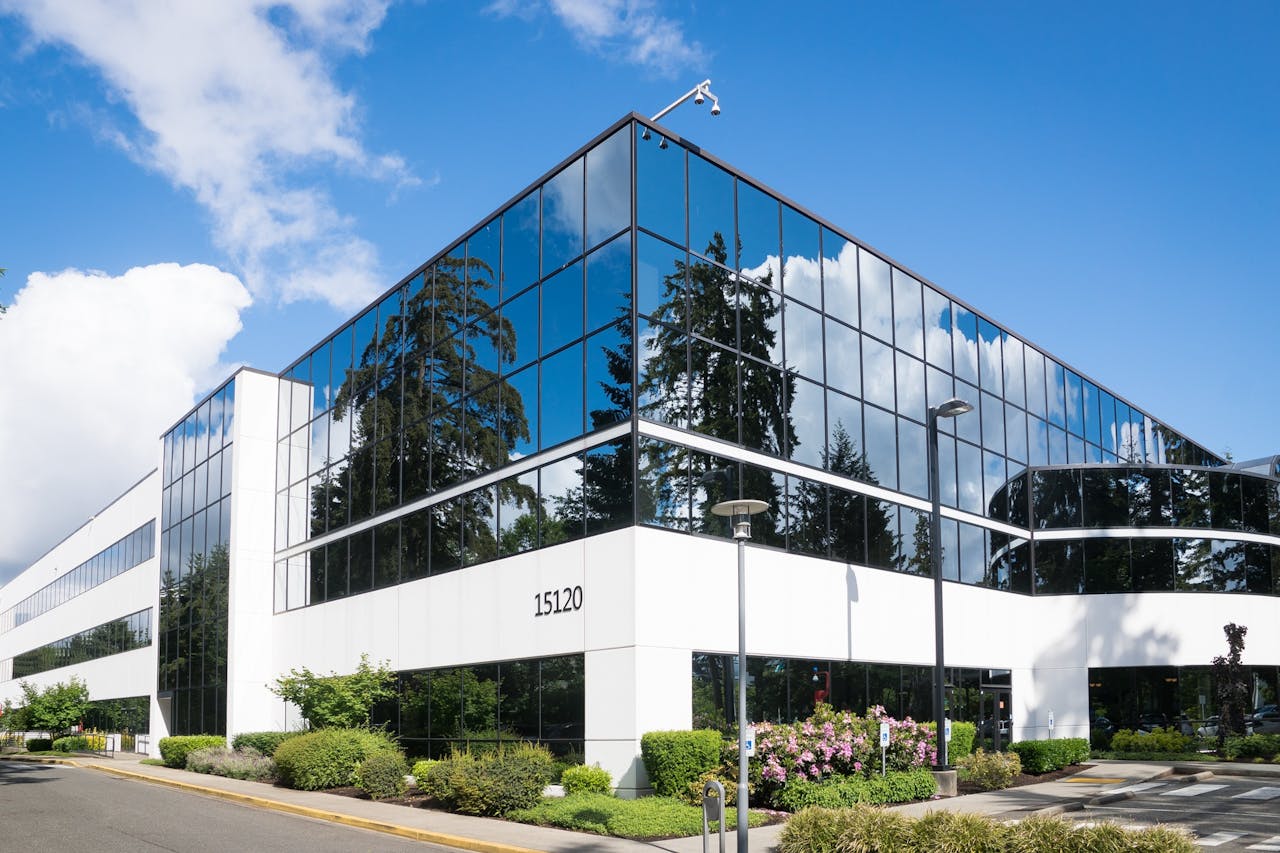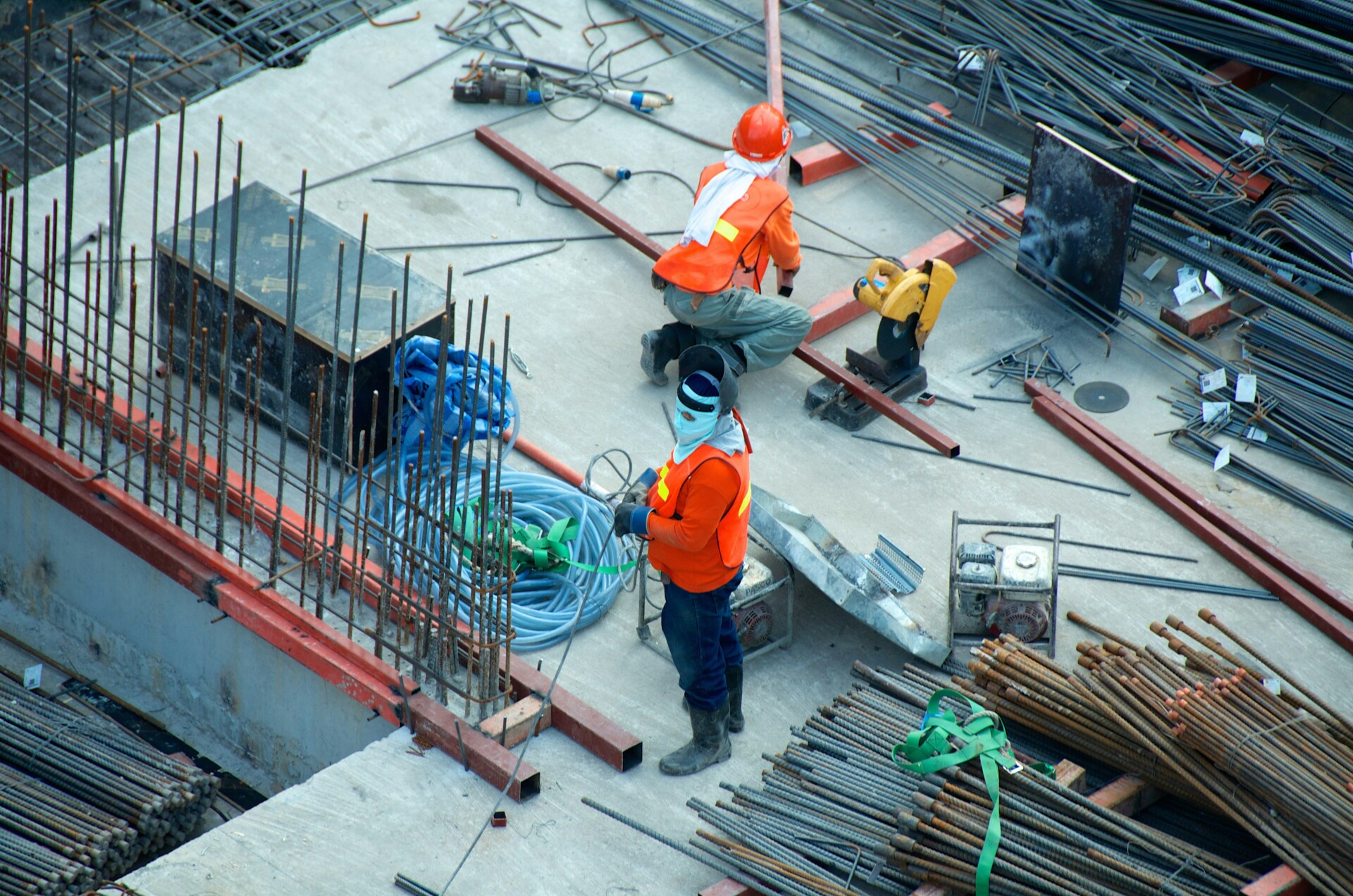As general contractors serving developers and property owners, we understand that ADA compliance for commercial parking lots goes beyond mere regulation—it’s about fostering truly inclusive spaces. Every commercial parking facility in the United States must adhere to specific accessibility guidelines to ensure safe, convenient access for all visitors. Proper planning, however, extends beyond just meeting these standards.
When we approach parking lot design and construction, we consider how the layout and features will impact the actual experience of customers and employees with disabilities. This involves evaluating factors such as the number and placement of accessible spaces, the width of access aisles, the slope and surface of pathways, and the visibility of signage. We have found that small details significantly enhance usability.
Of course, ADA compliance is also a legal necessity. Failing to meet standards can result in complaints, lawsuits, and significant penalties. However, we encourage our clients to view accessibility as an opportunity instead of a burden. A thoughtfully designed, welcoming parking area sets the tone for an inclusive commercial property and can even offer a competitive edge. Getting parking accessibility right benefits everyone visiting the site.
What Are the Key ADA Requirements for Commercial Parking Spaces?
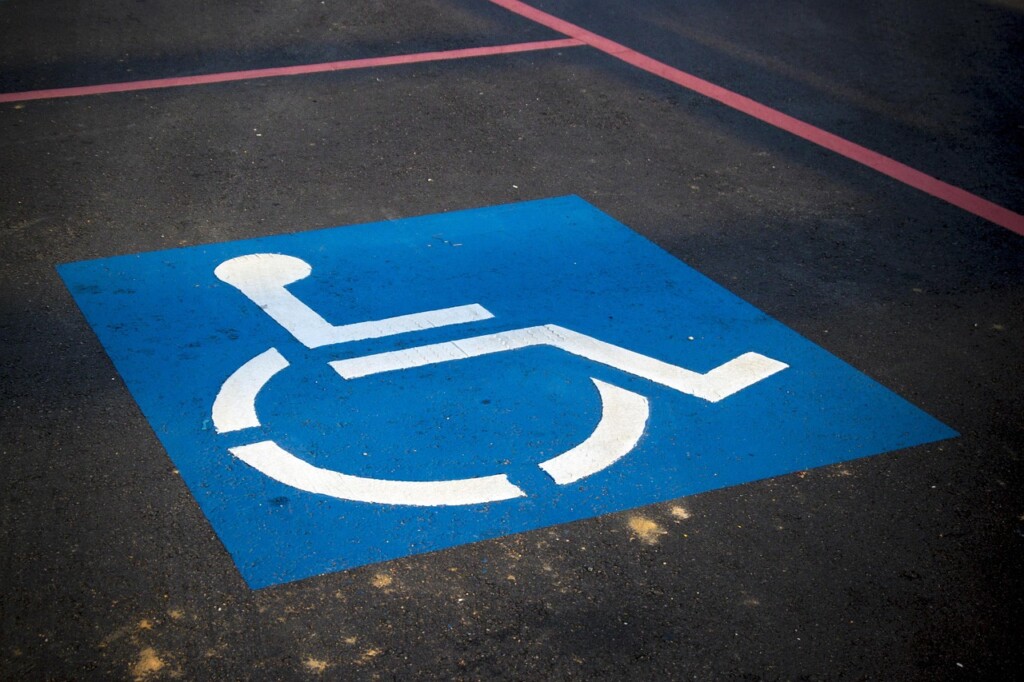
As general contractors, we understand that creating ADA-compliant parking spaces requires careful planning and execution. The key requirements include:
Strategic Location
We always place accessible parking spaces as close as possible to facility entrances. This ensures the shortest accessible route for people with disabilities, a critical aspect of ADA compliance. The goal is to minimize the distance individuals with mobility challenges need to travel.
Quantity Based on Lot Size
The number of required accessible spaces correlates directly with the total number of parking spots:
- For lots with 1-25 total spaces: 1 accessible space required
- 26-50 total spaces: 2 accessible spaces
- 51-75 total spaces: 3 accessible spaces
- 76-100 total spaces: 4 accessible spaces
This scale continues upward for larger lots. We carefully calculate this to ensure proper allocation.
Essential Access Aisles
Access aisles are a crucial feature we include in every accessible parking design. These designated areas serve two key purposes:
- Prevent other vehicles from blocking loading zones for accessibility vehicles
- Provide extra space for the operation of wheelchairs, walkers, and other mobility equipment
In straight (non-angled) parking configurations, we can design two accessible spaces to share a single access aisle, maximizing space efficiency while maintaining compliance.
Precise Size Requirements
We adhere to strict size specifications when constructing accessible parking spaces:
Standard Accessible Spaces
- Minimum width: 96 inches (8 feet)
- Access aisle width: At least 60 inches (5 feet)
Van-Accessible Spaces
We offer two compliant options:
- Option 1:
- Space width: 132 inches (11 feet)
- Access aisle: 60 inches (5 feet)
- Option 2:
- Space width: 96 inches (8 feet)
- Wider access aisle: 96 inches (8 feet)
These precise measurements ensure ample room for various types of accessible vehicles and the safe deployment of lifts or ramps.
Additional Considerations
- Surface quality: We ensure all accessible spaces and access aisles have firm, stable, and slip-resistant surfaces.
- Slope: The maximum allowable slope in any direction is 1:48 (approximately 2%).
- Signage: Each space requires proper signage displaying the international symbol of accessibility, mounted at least 60 inches above the ground.
By meticulously following these requirements, we create parking areas that not only meet ADA standards but truly serve the needs of all users, promoting accessibility and inclusivity in the built environment.
How Many Accessible Spaces Does Your Commercial Property Need?
As general contractors, we understand that providing the correct number of accessible parking spaces is crucial for ADA compliance. The requirements depend on the total number of parking spaces in your lot or structure. Here is a breakdown of the key information:
For smaller parking facilities:
- 1-25 total spaces: At least 1 accessible space
- 26-50 total spaces: At least 2 accessible spaces
- 51-75 total spaces: At least 3 accessible spaces
- 76-100 total spaces: At least 4 accessible spaces
For medium-sized lots:
- 101-150 total spaces: At least 5 accessible spaces
- 151-200 total spaces: At least 6 accessible spaces
For larger parking facilities, the number continues to increase proportionally. Importantly, regardless of lot size, at least one van-accessible space must be provided. For lots with six or more accessible spaces, one in every six must be van-accessible.
We pay special attention to medical facilities, which have specific requirements:
- Hospital outpatient facilities: 10% of patient/visitor parking must be accessible
- Rehabilitation facilities and outpatient physical therapy facilities: 20% of patient/visitor parking must be accessible
When designing parking layouts, we ensure these spaces are on the shortest accessible route to the facility entrance. This often means placing them close to building entrances or elevator lobbies in parking structures.
It is important to note that these requirements apply to each parking facility individually, not to the total spaces across multiple lots. This means if your property has several separate parking areas, each one needs to meet these standards independently.
As construction professionals, we recognize that the proper implementation of these requirements is essential not only for compliance but also for creating truly accessible environments. We work closely with property owners and developers to integrate these spaces seamlessly into overall site designs, ensuring they meet both legal standards and practical usability needs.
Remember, while these guidelines provide a baseline, local regulations may impose additional or more stringent requirements. We always recommend consulting with a qualified ADA specialist or legal professional to ensure full compliance for your specific property.
What Common Parking Lot Problems Affect Accessibility?

Commercial parking lots often face issues that can compromise accessibility and safety for all users, especially those with disabilities. As general contractors, we regularly encounter and address several common problems:
Potholes
Potholes develop from wear and tear, water damage, and poor construction. These depressions in the pavement surface create significant hazards, particularly for individuals using wheelchairs, walkers, or canes. A wheel catching in a pothole can cause a wheelchair to tip or stop abruptly, potentially injuring the user. For those with limited mobility, even small potholes pose tripping risks that could lead to serious falls.
Surface Raveling
Raveling occurs when the asphalt binder breaks down, resulting in loose rocks and debris on the parking lot surface. This deterioration creates an uneven, unstable surface that is difficult to navigate for people using mobility devices. The loose material can also cause wheels to slip or get caught, increasing the risk of accidents. For visually impaired individuals, raveling makes it challenging to detect safe paths using a cane.
Fatigue Cracking
Also known as alligator or crocodile cracking, fatigue cracks form interconnected patterns across the pavement surface. These cracks can catch wheelchair casters or walker legs, making smooth travel difficult and potentially causing users to lose balance. If left unrepaired, fatigue cracks often worsen into potholes, further compromising accessibility. The uneven surface created by extensive cracking also poses challenges for those with gait or balance issues.
Rutting
Ruts are surface depressions caused by high traffic, often appearing in wheel paths. For wheelchair users, deep ruts can cause chairs to veer off course or become stuck. The uneven surface created by rutting increases the physical effort required to navigate the parking lot, which can be particularly taxing for individuals with limited strength or stamina. Ruts filled with water after rain create additional slip hazards.
To maintain ADA compliance and ensure safety for all users, we recommend regular inspections and prompt repairs of these common issues. Depending on the severity, solutions may include patching, crack filling, or full resurfacing of affected areas. By addressing these problems quickly, property owners can maintain accessible, safe parking facilities that meet both legal requirements and the needs of all visitors.
| Total Number of Parking Spaces | Minimum Number of Accessible Spaces Required | Minimum Number of Van-Accessible Spaces Required |
|---|---|---|
| 1 – 25 | 1 | 1 |
| 26 – 50 | 2 | 1 |
| 51 – 75 | 3 | 1 |
| 76 – 100 | 4 | 1 |
| 101 – 150 | 5 | 1 |
| 151 – 200 | 6 | 1 |
| 201 – 300 | 7 | 2 |
| 301 – 400 | 8 | 2 |
| 401 – 500 | 9 | 2 |
| 501 – 1000 | 2% of total | 1 in every 6 |
| 1001 and over | 20, plus 1 for each 100 over 1000 | 1 in every 6 |
What Preventative Maintenance Solutions Improve Accessibility?
At EB3 Construction, we understand that maintaining accessible parking lots and walkways requires proactive measures to prevent deterioration and ensure compliance. Our team implements several key preventative maintenance solutions to improve and preserve accessibility:
Regular Sealcoating
We apply sealcoating to asphalt surfaces consistently. This enhances pavement resilience to weather damage and helps it withstand freeze-thaw cycles that can cause cracks and uneven surfaces. A smooth, sealed surface is essential for safe wheelchair maneuverability.
Prompt Crack Filling
Our crews quickly identify and fill emerging cracks before they develop into major accessibility barriers. This prevents water infiltration that can lead to more extensive damage. By maintaining a level surface, we reduce tripping hazards for all users.
Routine Inspections
We conduct monthly visual inspections of parking areas and pathways to spot potential issues early. Our trained staff knows how to identify problems that could impact accessibility, such as drainage issues or surface deterioration. For complex evaluations, we consult accessibility experts to ensure full ADA compliance.
Regular Sweeping and Debris Removal
Frequent sweeping is crucial to remove loose gravel, leaves, and other debris that can create hazards, especially for those using mobility devices. We maintain a rigorous sweeping schedule tailored to each property’s needs and usage patterns.
Timely Pothole Patching
When potholes occur, our team acts swiftly to patch them properly. This prevents damage from spreading to surrounding areas and maintains a smooth, traversable surface for all users. We use high-quality materials designed for longevity.
Walkway Maintenance
We extend our maintenance efforts to all walking surfaces connected to parking areas. Our team ensures these pathways meet ADA standards:
- Stable, firm, and slip-resistant surfaces
- Proper slope gradients (maximum 1:20 running slope and 1:48 cross slope)
- Minimum 36-inch width for wheelchair access
- Regular cleaning and repair of any surface irregularities
By implementing these preventative maintenance solutions, we help our clients maintain highly accessible parking lots and walkways. This proactive approach not only ensures ADA compliance but also extends the life of the pavement, resulting in long-term cost savings. Our commitment to accessibility reflects our broader dedication to creating inclusive, well-maintained spaces for all users.
| Maintenance Task | Description |
|---|---|
| Regular Sealcoating | Apply sealcoating to asphalt surfaces to enhance weather resistance and maintain a smooth surface. |
| Prompt Crack Filling | Quickly fill emerging cracks to prevent water infiltration and maintain a level surface. |
| Routine Inspections | Conduct monthly visual inspections to identify potential accessibility issues early. |
| Regular Sweeping and Debris Removal | Maintain a rigorous sweeping schedule to keep surfaces clear of hazards for mobility device users. |
| Timely Pothole Patching | Swiftly repair potholes to prevent spreading damage and ensure surface smoothness. |
| Walkway Maintenance | Ensure all walking surfaces connected to parking areas are stable, firm, and meet ADA slope standards. |
Conclusion: Creating Truly Accessible Commercial Properties
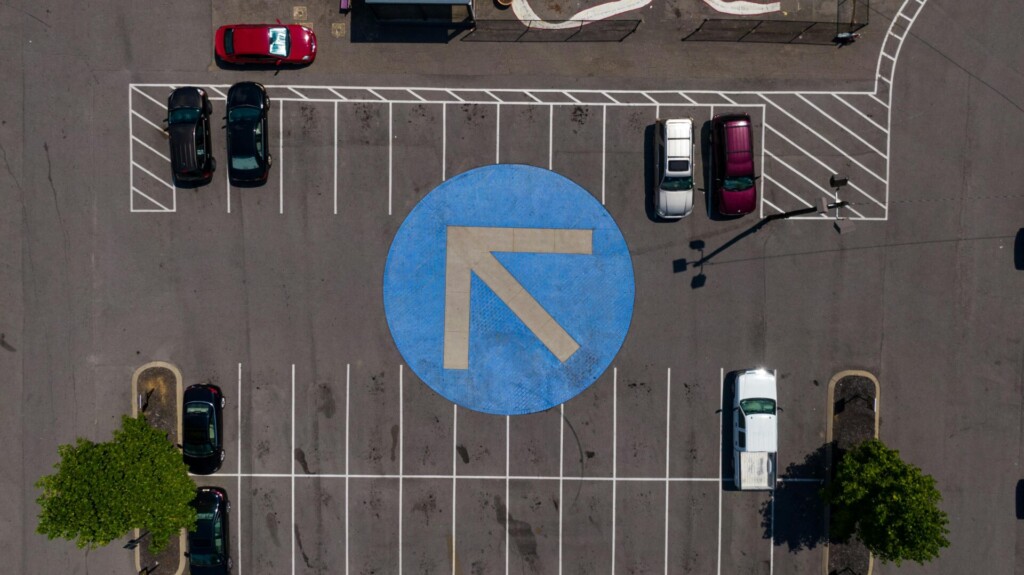
Addressing parking lot and accessibility challenges for commercial properties is more than meeting regulatory standards—it involves creating inclusive spaces where all customers and visitors can safely reach your business. By understanding ADA requirements for parking space location, access aisles, and size specifications, property owners can make informed decisions about layout and design. Regular maintenance through sealcoating, crack filling, and prompt repairs helps prevent accessibility barriers from forming.
At EB3 Construction, we believe accessibility is about more than just avoiding penalties; it’s about ensuring your property is welcoming to everyone. This inclusive approach ultimately enhances your business reputation and customer satisfaction. An accessible parking area often serves as a visitor’s first interaction with your property, setting the tone for their entire experience.
When evaluating your property’s accessibility, remember that creating genuinely accessible spaces requires ongoing attention. Regular assessments of your parking areas, including checking for worn markings, damaged signage, or surface issues, are crucial. A proactive maintenance plan not only ensures compliance but also demonstrates your commitment to all visitors.
Prioritizing accessibility in your commercial spaces means meeting more than just legal requirements—you’re welcoming a diverse customer base and fostering a more inclusive business environment. This approach can result in increased foot traffic, improved customer loyalty, and a stronger community presence.
We encourage you to reassess your property’s parking and accessibility features and consider how you can exceed the minimum requirements to create a genuinely welcoming space for all. For expert guidance on enhancing the accessibility of your commercial property, connect with an EB3 Construction specialist today.

